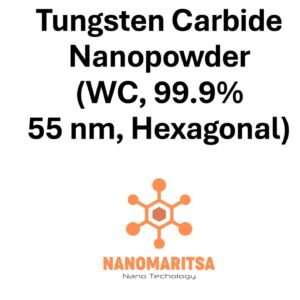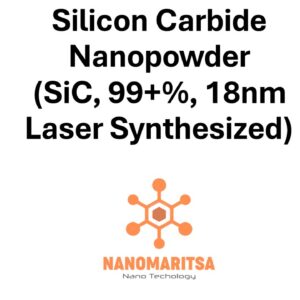Zirconium nitride (ZrN) is a high-performance ceramic material known for its impressive hardness, thermal stability, and corrosion resistance. In nanopowder form—with a particle size of about 800 nanometers and a purity of 99.9%—ZrN exhibits enhanced surface area and uniform microstructure. Its cubic crystal structure makes it particularly appealing for applications in advanced coatings, cutting tools, and electronics, where reliable mechanical and thermal properties are vital.
Composition and Structure
ZrN (Zirconium Nitride):
Zirconium nitride is a refractory compound composed of zirconium and nitrogen. Its cubic crystal lattice promotes isotropic mechanical strength, contributing to uniform and dependable performance in high-stress environments.
Purity (99.9%):
High purity reduces the presence of unwanted elements, ensuring better control over material properties such as hardness, conductivity, and corrosion resistance. This level of purity is essential in precision industries, where small compositional differences can significantly affect product quality.
Particle Size (800 nm):
While often referred to as a “nanopowder,” at approximately 800 nm the particles are on the higher end of the nanometer scale, sometimes extending into the submicron range. This size still offers a notable increase in surface area compared to larger grains, which enhances sintering and adhesion characteristics in coatings and composite materials.
Properties
Exceptional Hardness:
Zirconium nitride is among the harder ceramic materials, providing superior wear resistance. This property is crucial for cutting tools and protective coatings subjected to high friction.
Thermal Stability:
ZrN maintains its mechanical and chemical properties at elevated temperatures. Its stable cubic structure resists phase transformations, making it suitable for high-temperature applications in aerospace, automotive, and industrial processes.
Corrosion and Oxidation Resistance:
Thanks to its chemical inertness, ZrN withstands corrosive environments and oxidation, extending component lifespans in harsh operational settings.
Electrical Conductivity:
Unlike many ceramics, zirconium nitride exhibits moderate electrical conductivity. This opens possibilities for using ZrN in electronics where both ceramic durability and conductive properties are advantageous.
Applications
Wear-Resistant Coatings:
ZrN nanopowder is used to deposit hard, protective layers on cutting tools, molds, and industrial machinery. These coatings enhance component lifetimes by reducing abrasion, friction, and oxidation.
High-Temperature Components:
In high-temperature or thermally stressful environments, ZrN’s heat tolerance and corrosion resistance help maintain structural integrity, making it a valuable coating or component material in turbines, engines, and heat exchangers.
Electronics and Semiconductors:
Moderate electrical conductivity paired with high corrosion resistance makes ZrN suitable for select electronic applications, such as diffusion barriers or conductive layers in microelectronic devices.
Decorative Coatings:
ZrN coatings offer a distinct gold-like appearance and excellent durability, finding use in architectural elements, consumer products, and hardware finishes.
Composites and Ceramics:
Incorporating ZrN nanopowder into ceramic matrix composites can improve mechanical strength, thermal stability, and wear resistance, especially in aerospace and defense applications.
Recent Advancements and Research Contributions
Massachusetts Institute of Technology (MIT), USA:
Researchers at MIT are refining deposition techniques for ZrN coatings, aiming to optimize hardness and thermal shock resistance for turbine blades and high-speed cutting tools.
Tsinghua University, China:
Tsinghua University is investigating eco-friendly sintering processes for ZrN-based materials, focusing on reducing production costs and environmental impact.
National University of Singapore (NUS):
NUS scientists are integrating ZrN nanopowder into novel electronic and optoelectronic devices, harnessing its moderate conductivity and thermal stability for next-generation circuits.
University of Cambridge, UK:
The University of Cambridge is studying ZrN nanopowder dispersion in ceramic matrices to develop lightweight yet robust composites for aerospace components.
Recent Developments
- Low-Temperature Sintering: Advances in sintering aids and powder processing methods have reduced the thermal budget, allowing ZrN to be integrated into complex shapes with minimal grain growth.
- Advanced Coating Techniques: Enhanced physical vapor deposition (PVD) and chemical vapor deposition (CVD) processes are achieving smoother, denser ZrN coatings.
- Functional Nanocomposites: Hybrid materials combining ZrN with other nanoparticles are delivering multifunctional properties, such as enhanced conductivity, toughness, and oxidation resistance.
Future Prospects
Zirconium nitride nanopowder (ZrN, 99.9%, 800 nm, Cubic) remains a crucial material for evolving industries that demand hardness, durability, and thermal stability. Moving forward, this material is expected to:
- Drive innovations in high-performance cutting tools and protective coatings.
- Enable the development of robust electronic components and diffusion barriers.
- Contribute to the advancement of ceramic matrix composites in aerospace and industrial machinery.
With its resilience to heat, corrosion, and mechanical stress, ZrN nanopowder will continue to play a pivotal role in applications where only the toughest ceramic materials can thrive, fueling breakthroughs in manufacturing, electronics, and beyond.
| Measurement (gr) | 100 grams, 500 grams, 1000 grams |
|---|






